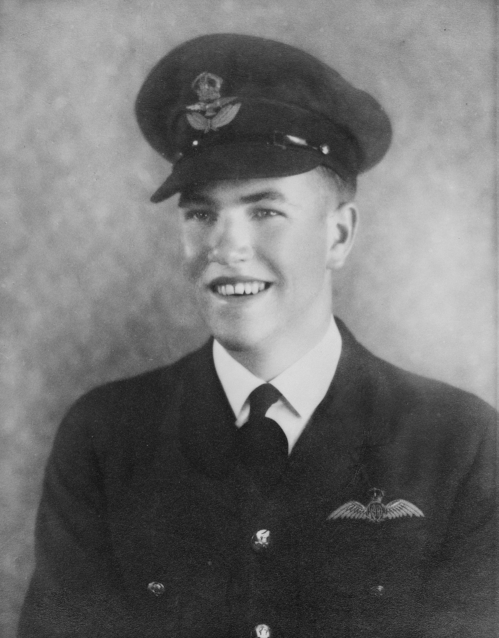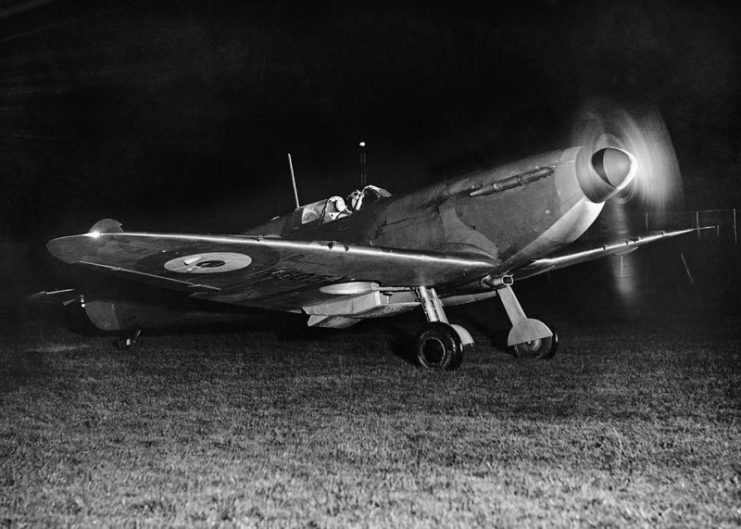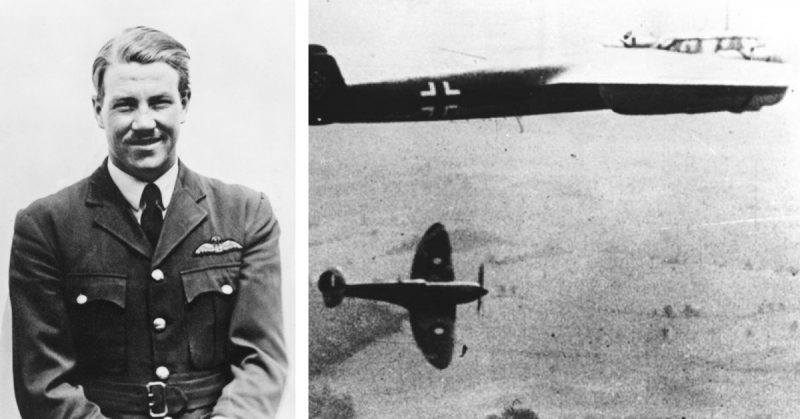In June of 2016 the book, A Spitfire Pilot’s Story: Pat Hughes: Battle of Britain Top Gun went on sale. It was written by Dennis Newton, an Australian aviation author of six books.
It is the true story of Flight Lieutenant Paterson ‘Pat’ Clarence Hughes, an Australian military pilot. In 1937 he accepted a commission with Britain’s Royal Air Force. During the Battle of Britain in WWII, he shot down no less than fourteen enemy planes within a few weeks. Newton’s book on the forgotten Australian hero is filled with military photos donated by Hughes family, including pictures of wartime London.
Pat Hughes was born in Numeralla, New South Wales, Australia on September 19, 1917, to Percy and Caroline Hughes. He was educated at Cooma District Public School, and Petersham Boys’ Intermediate and Fort Street Boys’ High. After graduating and a short-lived job, in 1936 he joined the Royal Australian Air Force in Victoria. The following year he shipped out to help Britain’s RAF. After a few years, Hughes was promoted to flight commander of No. 234 Squadron.
On their first few missions Hughes and his men – flying Spitfires, one of the most popular planes among fighter pilots – shot down two German Junkers 88s. Several days later he shot down a Messerschmitt Bf 110 and assisted in the destruction of another. During the following days, he took out six more Messerschmitt Bf 109s and three Bf 110s, two Bf 109s and one Bf 109.

Hughes earned the respect of his fellow pilots and became the best scoring Australian fighter pilot who participated in the Battle of Britain in 1940. Sadly, he is one of the least remembered.
On September 7, 1940, during a massive daylight German bombing attack on London, Hughes was killed. He had been chasing a German Dornier 17. He was only 22 and had been married just six weeks. There has been much speculation as to how it happened.
Hughes was known for his trait of going in tight for the kill. The possibility of a collision with his target or another plane, flying debris or accidentally flying through the path of an attack on another aircraft, have all been suggested. It has also been said that Hughes bailed out before his Spitfire crashed but his parachute failed to open. His body was found and interred in St. James Churchyard, Sutton-on-Hull in Yorkshire, England.
The Battle of Britain began in July of 1940 and was the first battle that was fought predominantly in the sky. The German Luftwaffe was dropping bombs primarily on Britain’s industrial locations, but a misdirected pilot accidentally bombed London. In retaliation, Prime Minister Winston Churchill ordered the bombing of Berlin.

Hitler had promised the citizens of Berlin that they would never be attacked and the bombing made him look like a fool. Hitler was furious and immediately ordered retribution on London. For three months London suffered under almost daily bombings, both day and night, destroying thousands of civilian homes and businesses.
Historic buildings and churches were at risk. Over 20,000 civilians were killed, and over 30,000 were injured. It was important for the Nazis to control the English Channel, to give them a jumping-off point for their invasion of Britain. They had already claimed most of the Channel Islands and were building fortifications along the French coast, but the tenacity of the Brits stalled the Germans in France.
During the Battle of Britain, the Luftwaffe lost approximately 3,000 pilots and crew, 900 were captured, and over 700 were wounded. Almost 2,000 planes were destroyed.
The Royal Air Force lost 544 pilots and crew, over 700 from the RAF Bomber Command and more than 200 from the RAF Coastal Command. Over 400 airmen were wounded, and 1,700 aircraft lost.
